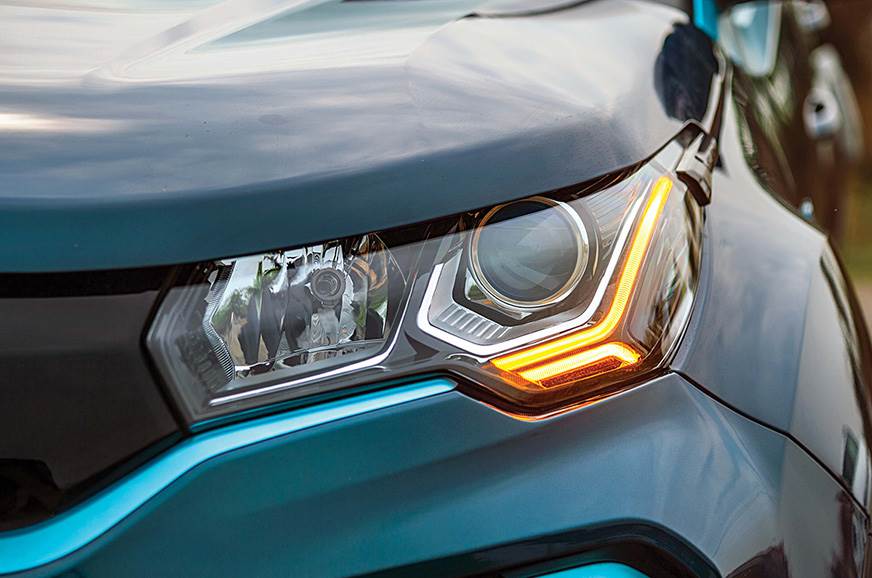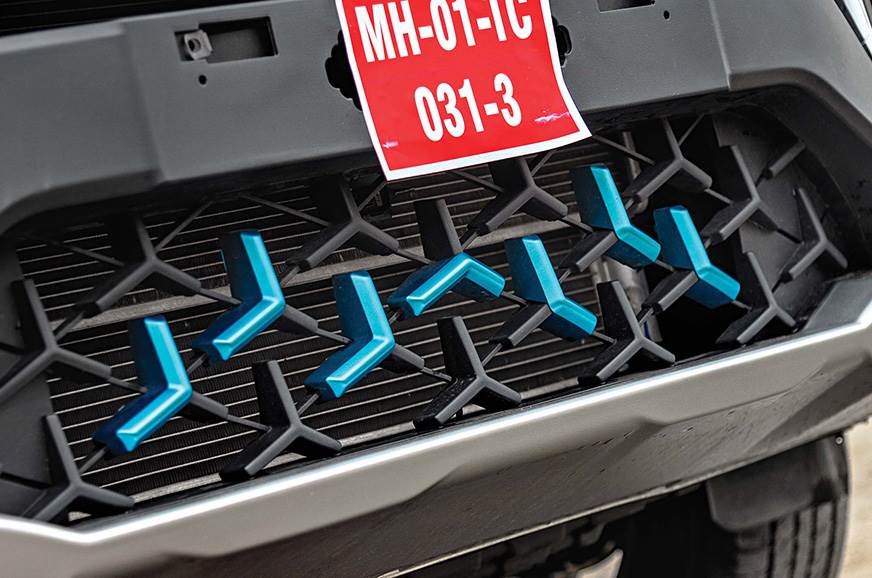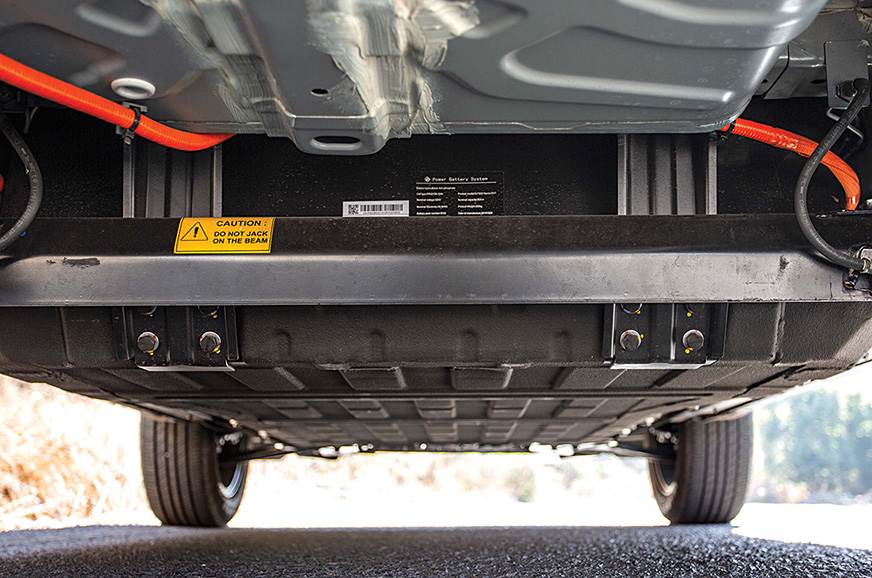The Nexon facelift made its debut with the EV, which was followed by the ICE versions. The SUV’s funky front-end styling has been replaced by a more mature design, and while its profile remains distinct, there’s a lot going on to make it look fresh. The bonnet area, especially, has been restyled, and is more raised and flatter than before. This not only adds character to the Nexon, but also helps it meet pedestrian protection norms. The headlamps are classier now, with Y-shaped DRLs that double up as turn indicators. Curiously, the multi-coloured tri-arrow design elements scattered on the front air dam (which resemble the Mercedes-Benz three-pointed star) have been changed to a bi-arrow design, so only two out of the three spokes are now coloured blue. Its new 16-inch wheels don’t just look smarter, they are about a kilogram lighter as well. The ceramic-like window highlight has been replaced by a light blue-coloured strip. And, like the headlamps, the tail-lamps too feature Y-shaped LED elements, connected by a light blue band running the breadth of the boot.

Halogen projector headlamps with LED DRLs doubling up as indicators.
Built on the older X1 platform, as is the standard Nexon, the EV receives some crucial structural modifications to accommodate the 30.2kWh battery pack beneath the cabin floor and the permanent magnet synchronous motor under its bonnet. Interestingly, all the suspension components, including the springs, dampers and even the brakes, are shared with the ICE version. That the Nexon is built on the same platform that has secured a solid five-star rating in Global NCAP crash tests is reassuring, and even though the EV hasn’t been crash tested yet, the company is pretty confident of clearing all tests.

Now only two out of the three Mercedes-like spokes are blue coloured.
What’s even more reassuring is that the battery pack has been certified with an AIS 48 rating – the most stringent safety test in India, which includes nail penetration up to the cell level, a crush test, a fire test, and more. It also conforms to IP67 standards, which means it has passed the test of being submerged under one metre of water for 30 minutes without any ill effects. To further boost buyer confidence, Tata offers an eight-year or 1,60,000km warranty on the battery pack and motor, in addition to the three-year or 1,25,000km standard warranty.

Battery clears the most stringent Indian safety and damage tests.


















Tell us what you think.